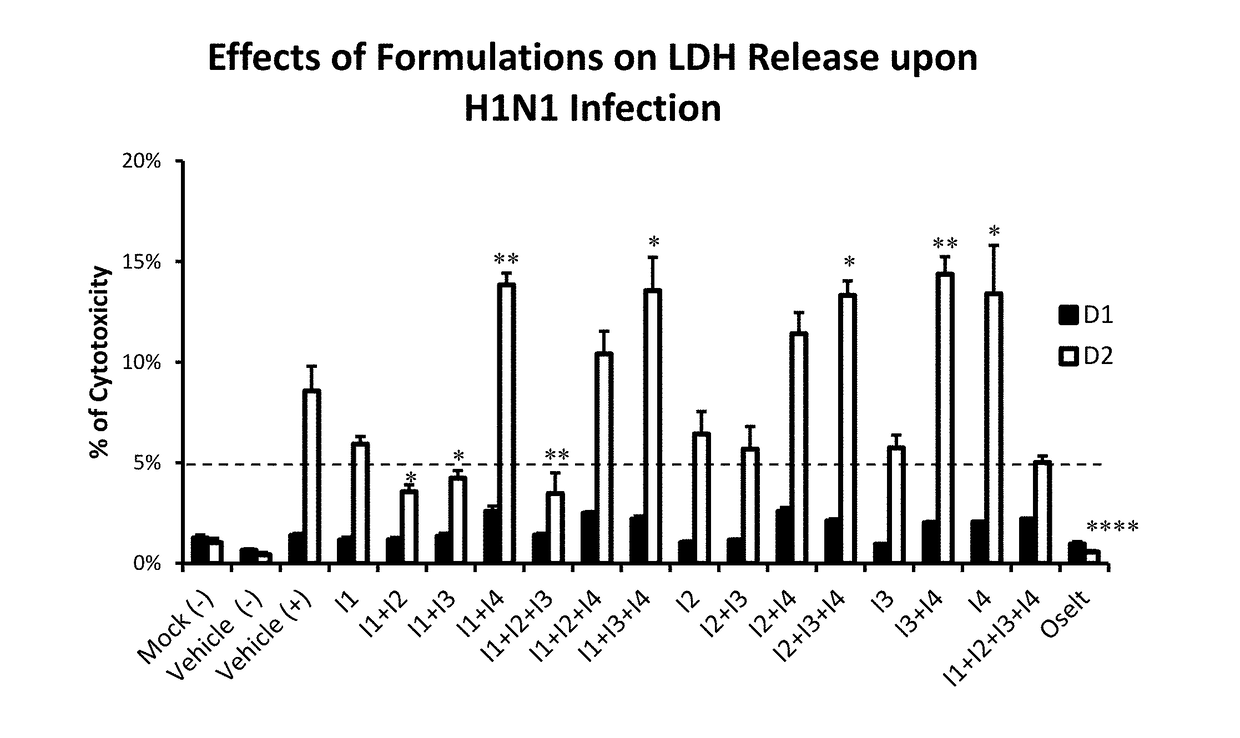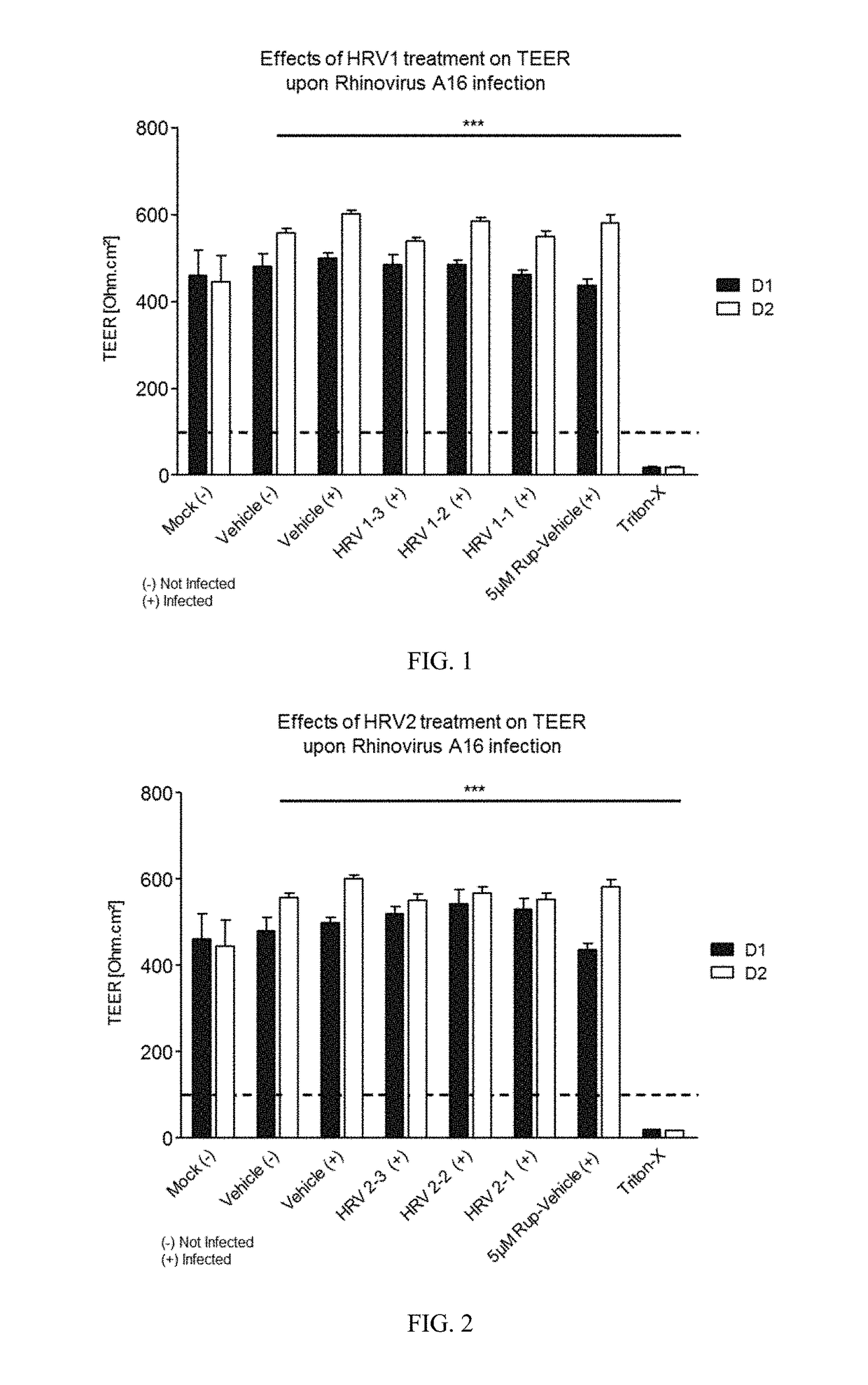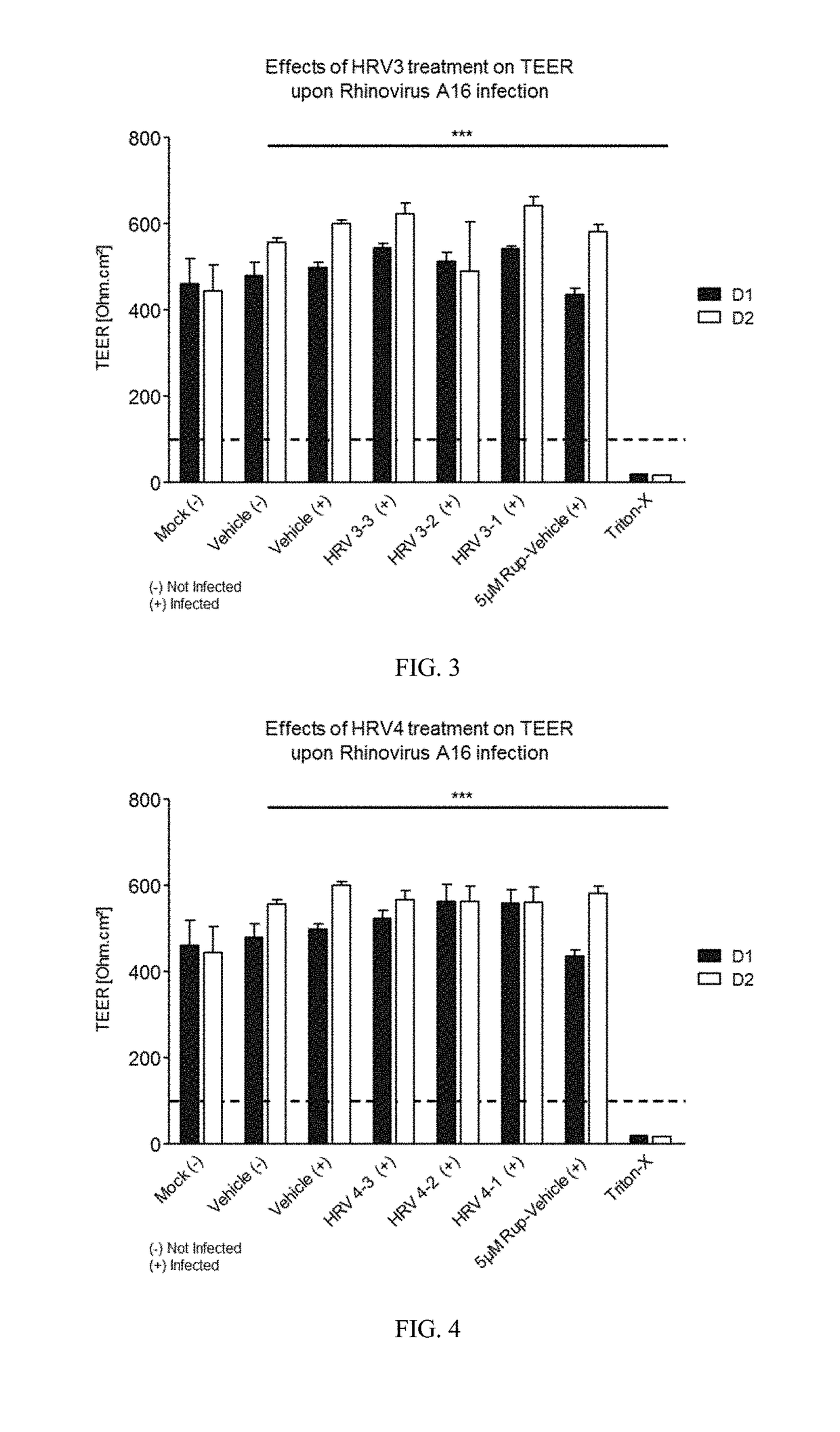Compositions and methods for protecting against airborne pathogens and irritants
a technology of airborne pathogens and compositions, applied in the direction of drug compositions, aerosol delivery, plant/algae/fungi/lichens ingredients, etc., can solve the problem that the liquid carrier is ideally, but not necessarily suitable for rheology, and achieve the effect of enhancing the ability of the epithelial membran
- Summary
- Abstract
- Description
- Claims
- Application Information
AI Technical Summary
Benefits of technology
Problems solved by technology
Method used
Image
Examples
example 1
ation of Antimicrobial Compositions in Non-Human Subjects to Prevent Infection
[0294]Varying concentrations of antimicrobial compositions containing ingredients from Table 1 are administered intranasally to a group of healthy, uninfected mice selected for age, gender and weight. After a suitable period of time to allow the compositions to take effect, mice are inoculated nasally with varying doses of respiratory pathogens (influenza, rhinovirus, bacteria, and fungi). At different subsequent time points, samples are extracted from the mice and analyzed for microbial infection. Lack of infection indicates the antimicrobial composition prevents the airborne pathogens from infecting the mice. The antimicrobial composition enhances the filtering capabilities of the nasal membrane and protects against the airborne pathogens.
example 2
ation of Antimicrobial Compositions in Non-Human Subjects to Treat Infection
[0295]A group of healthy, uninfected mice selected for age, gender and weight are inoculated nasally with varying doses of respiratory pathogens (influenza, rhinovirus, bacteria, and fungi). After allowing suitable time for the pathogens to infect the mice, varying concentrations of antimicrobial compositions containing ingredients from Table 1 (as in Example 1) are administered intranasally to the infected mice. After a suitable period of time to allow the compositions to take effect, samples are extracted from the mice and analyzed for microbial infection. Lack of infection indicates the antimicrobial composition treats the respiratory infections within the mice. The antimicrobial composition enhances the filtering capabilities of the nasal membrane and treats the infection caused by airborne pathogens.
example 3
ation of Antimicrobial Compositions in Human Subjects to Treat Infection
[0296]A group of human subjects presenting without pre-existing influenza or rhinoviral infections are selected for treatment and their baseline blood drawn to screen for markers of respiratory infection. Antimicrobial compositions containing ingredients from Table 1 (as in Examples 1 and 2) are administered intranasally to the subjects. After a suitable period of time to allow the compositions to take effect, subjects are exposed to airborne rhinovirus or influenza. After a suitable period of time to determine whether they had been infected, their bloods would again be drawn and screened for systemic markers of respiratory infection and they would be observed and questioned for visible evidence of respiratory infection. Lack of infection indicates the antimicrobial composition prevents respiratory infections. The antimicrobial composition enhances the filtering capabilities of the nasal membrane and prevents th...
PUM
| Property | Measurement | Unit |
|---|---|---|
| concentration | aaaaa | aaaaa |
| concentration | aaaaa | aaaaa |
| v/v | aaaaa | aaaaa |
Abstract
Description
Claims
Application Information
 Login to view more
Login to view more - R&D Engineer
- R&D Manager
- IP Professional
- Industry Leading Data Capabilities
- Powerful AI technology
- Patent DNA Extraction
Browse by: Latest US Patents, China's latest patents, Technical Efficacy Thesaurus, Application Domain, Technology Topic.
© 2024 PatSnap. All rights reserved.Legal|Privacy policy|Modern Slavery Act Transparency Statement|Sitemap



